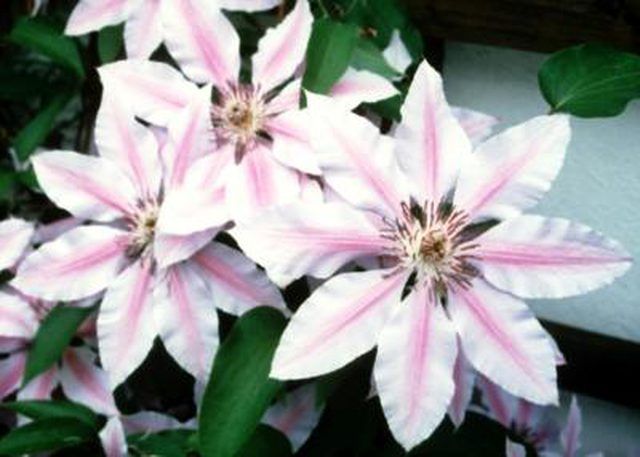Bulbs
Flower Basics
Flower Beds & Specialty Gardens
Flower Garden
Garden Furniture
Garden Gnomes
Garden Seeds
Garden Sheds
Garden Statues
Garden Tools & Supplies
Gardening Basics
Green & Organic
Groundcovers & Vines
Growing Annuals
Growing Basil
Growing Beans
Growing Berries
Growing Blueberries
Growing Cactus
Growing Corn
Growing Cotton
Growing Edibles
Growing Flowers
Growing Garlic
Growing Grapes
Growing Grass
Growing Herbs
Growing Jasmine
Growing Mint
Growing Mushrooms
Orchids
Growing Peanuts
Growing Perennials
Growing Plants
Growing Rosemary
Growing Roses
Growing Strawberries
Growing Sunflowers
Growing Thyme
Growing Tomatoes
Growing Tulips
Growing Vegetables
Herb Basics
Herb Garden
Indoor Growing
Landscaping Basics
Landscaping Patios
Landscaping Plants
Landscaping Shrubs
Landscaping Trees
Landscaping Walks & Pathways
Lawn Basics
Lawn Maintenance
Lawn Mowers
Lawn Ornaments
Lawn Planting
Lawn Tools
Outdoor Growing
Overall Landscape Planning
Pests, Weeds & Problems
Plant Basics
Rock Garden
Rose Garden
Shrubs
Soil
Specialty Gardens
Trees
Vegetable Garden
Yard Maintenance
How to Grow Clematis on a Lamp Post
How to Grow Clematis on a Lamp Post. Growing a clematis on a lamppost is an ideal way to show off the flowering vine. Finding the right support system, however, is not so simple. Clematis grow upright by wrapping their tendrils around thin supports, and cannot effectively grow up a bare lamppost. The tendrils are not long, so the support added to...

Growing a clematis on a lamppost is an ideal way to show off the flowering vine. Finding the right support system, however, is not so simple. Clematis grow upright by wrapping their tendrils around thin supports, and cannot effectively grow up a bare lamppost. The tendrils are not long, so the support added to the post needs to have thin parts -- less than 1/2 inch -- for the tendrils to grab onto and work their way up. You also need to choose the right clematis and follow a few simple guidelines for growing success.
Things You'll Need
Galvanized wire fencing
Wire cutters
Cup hooks (optional)
Wood scraps (optional)
Spray paint
Compost
Super-phosphate
Vine clips
Select an appropriate clematis for a lamppost. You want to choose one that has a mature height of 10 to 12 feet. Most commonly available clematis fit that specification, however, there are some mammoth ones and some mounding ones that you want to avoid for this location.
Make a sturdy support system for the post by creating a cylinder of wire fencing material to wrap around the lamppost. Cut the wire fencing material using the cutters so the cylinder will be 4 inches wider than the circumference of the lamppost. Paint it to match the lamppost with spray paint. Wrap it around the post and secure the cylinder by wrapping the cut ends around the straight end. The support should not be flush with the lamppost surface. There will be about an inch or two clearance between the post and the wire. The extra distance provides ventilation and room for the clematis to weave through easily. Hang the wire cylinder from cup hooks affixed to the top of the post, for a wood post, or affix wood scraps between a metal post and the wire as a buffer to keep it spaced properly.
Plant the clematis about a foot away from the lamppost, leaving any trellis that came with the plant attached. This distance provides room for growth and room to access the lamppost for painting or other maintenance. Angle the root ball and trellis towards the lamppost and backfill with good quality soil amended with at least 50 percent compost and a handful of super-phosphate for good root development. Add 2 inches of mulch over the planting area to retain moisture and suppress weeds.
Water the clematis throughout the growing season so that the plant receives at least 1 inch of water a week. Clematis do not like drying out.
Cut the clematis completely to the base the spring after planting, regardless of the pruning instructions for the type of clematis. This will create good branching and multiple stems to produce a full plant.
Fertilize with a rose or tomato granular food each spring. Prune according to the type of clematis you have.
Attach the vine stems to the support with vine clips early in the season to guide the first few stems up the support. After that initial assistance, the vine will be able to twine its way to the top on its own. When the vine reaches the top of the lamppost, it starts to cascade gracefully down the structure.
Tips & Warnings
Plant a clematis on either side of your lamppost for a fuller look. They can be different cultivars, but they should have the same pruning requirements.
Choose 14-gauge wire fencing with a grid size of 2 inches by 4 inches. It is easy to cut to size with wire cutters and the grid size is ideal for clematis tendrils to weave through. It is thick enough to be nearly freestanding with just a minor connection to the lamppost.
Wire fencing is made in various heights in increments of 1 foot. You can get fencing in the same height as your lamppost or you can make two layers of smaller heights and attach them to each other by hooking the cut ends over the other piece.
You may be able to locate some suitable pre-made cylindrical wire cages at specialty supply stores intended for vegetable gardening. They may not be just right, but you may be able to adapt them to your needs.
You can make alternative support systems using columns of twine, wire or fishing line affixed to the top and bottom of the post, but these will not be as sturdy or long lasting as the wire fencing.
Avoid chicken wire or wire mesh (hardware cloth) for the support. The former is too thin and the latter has a grid size that is too small for the tendrils to grab.